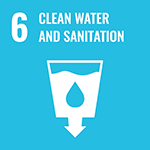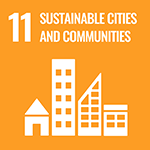Strengthening of the Environmental Radiation Control and Legislative Basis for the Environmental Remediation of Radioactively Contaminated Sites
Principal Investigator


Director General
State Specialized Enterprise ‘ECOCENTRE'
Serhii Kirieiev
ODA Recipient Country
Ukraine
Research Institutions in Japan
Fukushima University / University of Tsukuba
Research Institutions in Counterpart Country
State Agency of Ukraine on Exclusion Zone Management / ECOCENTRE / Chornobyl Center for Nuclear Safety & Waste Management and Radioecology / State Nuclear Regulatory Inspectorate of Ukraine / State Scientific Technical Centre on Nuclear and Radiation Safety / Central Geophysical Observatory / National Institute for Strategic Studies / Ukrainian Institute for Agricultural Radiology / Radiation Protection Institute of ATS Ukraine / National Academy of Sciences of Ukraine / Ukrainian Hydrometeorological Institute / Institute of Mathematical Machine and System Problems / Institute of Safety Problems of Nuclear Power Plants / Institute of Hydrobiology / Institute of Geological Sciences
Adoption fiscal year
FY 2016
Research Period
5 Years
Overview of the Research Project
Enhance monitoring for understanding changes in the dynamics of radionuclides that may be caused by recent environmental changes
The Exclusion Zone surrounding Chornobyl Nuclear Power Station is contaminated by radiocesium and various other radioactive materials, which are still having a devastating impact even 31 years since the accident. The water level of the Chornobyl Cooling Pond is diminishing till 6 m lower level since the circulation pump has been stopped in 2014, that will provide changes in the water environment and surrounding ecosystem. In addition, there is concern that the frequent occurrence of forest fires will also have an impact on the transport of radioactive materials. The project aims to support the enhancement of monitoring and prediction of the environmental dynamics of radionuclides by taking the above-mentioned factors into account.
Strengthening the management of the Exclusion Zone through enhanced monitoring and model predictions
Recently, the Ukrainian Government provides the efforts to restructure the Chornobyl Exclusion Zone with the aim of more effective land utilization rather than the resettling of refugees, since radioactive nuclides with a far longer lifetime than cesium -137* exist in this area. Land use purposes under consideration include waste management, operation of solar panels and designation as a wildlife reserve to protect the wild animals that have increased in population. It is expected that the findings of this project, such as environmental dynamics of radionuclides materials and estimated exposure to radiation of workers that enter this area, will be useful in facilitating the effective management of the Exclusion Zone.
*Cesium -137: A radionuclide with a mass number of 137. Its half-life period is estimated to be about 30 years.
Photo gallery
Research Project Web site
Press Release
Links
Projects
Contact Us
Japan Science and Technology Agency (JST)
Department of International Affairs
SATREPS Group
TEL : +81-3-5214-8085
Related articles by Category
- Global-scale environmental issues
Environment / Energy
(Global-scale environmental issues)
 Socialist Republic of Vietnam
Socialist Republic of Vietnam
From grossly contaminated river water to drinking water!
Establishing Sustainable Water Supply System Resilient to the Contamination of Drinking Water Sources
- Europe
Environment / Energy
(Carbon Neutrality)
 Republic of Tajikistan
Republic of Tajikistan
Use ground heat in arid regions to tackle both energy access and global warming!
Development of a Decarbonized Heat Energy Supply System using Ground Heat Source
- SDGs : Goal.6
Environment / Energy
(Global-scale environmental issues)
 Socialist Republic of Vietnam
Socialist Republic of Vietnam
Toward resolving environmental pollution through technology and personnel capable of on-site analysis!
Development of Easy-operation High-tech Analytical Devices and Human Resource for Food Safety and Environmental Quality Control




















